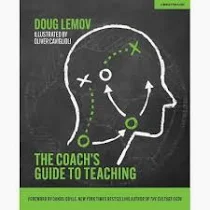07.13.24Better Questioning for Athletes Starts with Clear Principles of Play

I’m prepping this weekend to narrate the audiobook version of The Coach’s Guide to Teaching… which basically means reading my own book. Obviously that means noticing a lot of small things I’d like to change. But also noticing some passages that, as I learn more, I see even more value in.
Here’s one, from the chapter on decision-making. It starts with the observation that in a group invasion game players should be familiar with either a game model or a set of principles of play that describe what we are trying to accomplish. I made some light edits to it to improve it’s clarity:
Once players know their principles of play [or the elements of a clear game model]… they can be used to make questioning more efficient and more focused on solving specific problems.
For example, let’s say a U16 team has divided its principles of play into four parts. They have three principles for transition to offense (having just won the ball):
■ Play immediately away from pressure
■ Spread the field—fast (to stretch the defense)
■ Find numerical advantage in as few passes as possible
A coach could then use these principles to help players make and understand effective decisions during training with short sequences of questioning like this:
- Pause. Boys, we’ve just won the ball. What’s our first principle in transition?
- “Play away from pressure.”
- Ok. So Carlos has won the ball for us. Where’s the pressure.
- From Kevin and Paul.
- So a good first pass would be?
- To Matty?
- Because?
- It’s away from pressure.
- And Matty what are you looking for when you get it?
- Play where we’ve got numbers up.
- Good. Let’s see if we can do that. Play again from Carlos. Go!
Or:
- Pause. Boys, we’ve just won the ball. What’s our first principle in transition?
- “Play away from pressure.”
- Ok but what about those of us who don’t have the ball?
- “Stretch the defense”
- So Matty and Jose what could your movement look like here.
- [They model movements to create width and depth.]
- Ok. Now we’re ready for transition. Play!
Or
- What phase are we in, Byron?
- We just won the ball.
- OK, so assess our decision as a team there.
- We sort of played back into pressure.
- OK, what’s a way to fix that?
Or:
- Our first principle is to play away from pressure. Look at how we were positioned. Why were we unable to accomplish that goal?
The key here is that principles of play make questioning productive and efficient because they reduce guessing.
If I did not have principles of play and I said, “We just won the ball, what do we want to do here?” players would likely guess (and guess wrong) which wastes time and dilutes focus from the real problem-solving of figuring out execution.
Another way of thinking about principles is that they shift the emphasis of player thinking from what to do to how to do it.
Some coaches may not like this. The idea of allowing players to discover principles has many advocates. And I think there is legitimacy to allowing players to occasionally derive principles for themselves.
But generally speaking, the intellectual challenges of the game have more to do with implementing a shared idea once you know it than deriving the idea itself.
We know we want to press. The whole team is pressing. I don’t want my players to derive a new defending strategy or to define a different role for themselves within the press.
The problem-solving I want is “How do I react when I am pressing and the opposing goalkeeper is good with the ball at his feet or when my own teammate reacts slowly?”
It may be useful to spend 30 minutes having players “discover” that they should play away from pressure but really learning how to play away from pressure under a variety of circumstances is a more productive.
Having shared principles accelerates that process.
